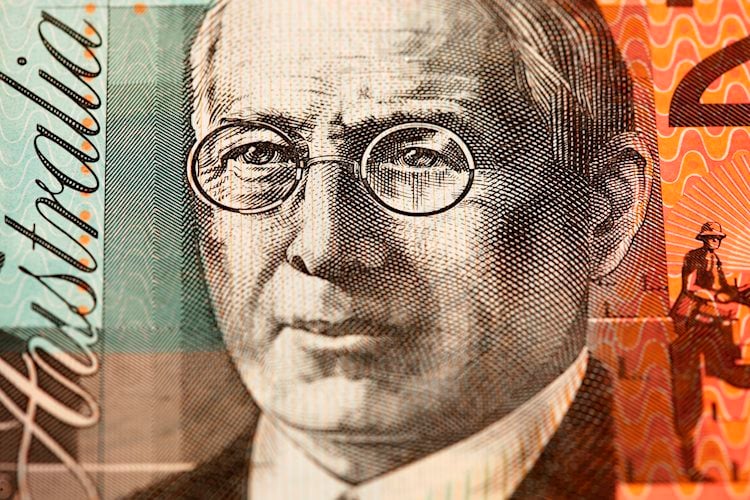- AUD/USD holds positive ground near 0.6555 in Monday’s early Asian session.
- The US PCE inflation increases 2.5% YoY in June, underscoring an improving inflation environment.
- The RBA’s hawkish stance might support the Aussie.
The AUD/USD pair trades on a stronger note around 0.6555 during the early Asian session on Monday. The rising bets that the US Federal Reserve (Fed) would begin cutting interest rates in September weigh on the US dollar (USD). Market participants will monitor the Australian Retail Sales on Tuesday. On Wednesday, the Australian Consumer Price Index (CPI) and Fed Interest Rate Decision will be in the spotlight.
Data released by the US Bureau of Economic Analysis on Friday showed that the Personal Consumption Expenditures (PCE) Price Index increased by 2.5% on a yearly basis in June, compared to 2.6% in May. This figure was in line with the market consensus. On a monthly basis, the PCE Price Index rose 0.1% after staying unchanged in May.
The US Core PCE inflation, which excludes volatile food and energy prices, rose to 2.6% in the same period, matching May’s increase and coming in above the estimation of 2.5%. The core PCE Price Index rose 0.2% MoM in June, compared to 0.1% in May.
The Fed has kept its benchmark overnight interest rate in the current 5.25%-5.50% range since last July. However, the signs of cooling inflation and easing labour market conditions have fueled financial markets to expect three rate cuts this year, starting in September. This, in turn, exerts some selling pressure on the Greenback and creates a tailwind for AUD/USD.
On the Aussie front, the hawkish stance from the Reserve Bank of Australia (RBA) might limit further depreciation of the Australian Dollar (AUD). The RBA is likely to delay its rate cuts due to persistently high inflation. The markets bet on a potential rate hike in the fourth quarter, which mirrors the nearly 50% chance of either a September or November rate hike.
Australian Dollar FAQs
One of the most significant factors for the Australian Dollar (AUD) is the level of interest rates set by the Reserve Bank of Australia (RBA). Because Australia is a resource-rich country another key driver is the price of its biggest export, Iron Ore. The health of the Chinese economy, its largest trading partner, is a factor, as well as inflation in Australia, its growth rate and Trade Balance. Market sentiment – whether investors are taking on more risky assets (risk-on) or seeking safe-havens (risk-off) – is also a factor, with risk-on positive for AUD.
The Reserve Bank of Australia (RBA) influences the Australian Dollar (AUD) by setting the level of interest rates that Australian banks can lend to each other. This influences the level of interest rates in the economy as a whole. The main goal of the RBA is to maintain a stable inflation rate of 2-3% by adjusting interest rates up or down. Relatively high interest rates compared to other major central banks support the AUD, and the opposite for relatively low. The RBA can also use quantitative easing and tightening to influence credit conditions, with the former AUD-negative and the latter AUD-positive.
China is Australia’s largest trading partner so the health of the Chinese economy is a major influence on the value of the Australian Dollar (AUD). When the Chinese economy is doing well it purchases more raw materials, goods and services from Australia, lifting demand for the AUD, and pushing up its value. The opposite is the case when the Chinese economy is not growing as fast as expected. Positive or negative surprises in Chinese growth data, therefore, often have a direct impact on the Australian Dollar and its pairs.
Iron Ore is Australia’s largest export, accounting for $118 billion a year according to data from 2021, with China as its primary destination. The price of Iron Ore, therefore, can be a driver of the Australian Dollar. Generally, if the price of Iron Ore rises, AUD also goes up, as aggregate demand for the currency increases. The opposite is the case if the price of Iron Ore falls. Higher Iron Ore prices also tend to result in a greater likelihood of a positive Trade Balance for Australia, which is also positive of the AUD.
The Trade Balance, which is the difference between what a country earns from its exports versus what it pays for its imports, is another factor that can influence the value of the Australian Dollar. If Australia produces highly sought after exports, then its currency will gain in value purely from the surplus demand created from foreign buyers seeking to purchase its exports versus what it spends to purchase imports. Therefore, a positive net Trade Balance strengthens the AUD, with the opposite effect if the Trade Balance is negative.
